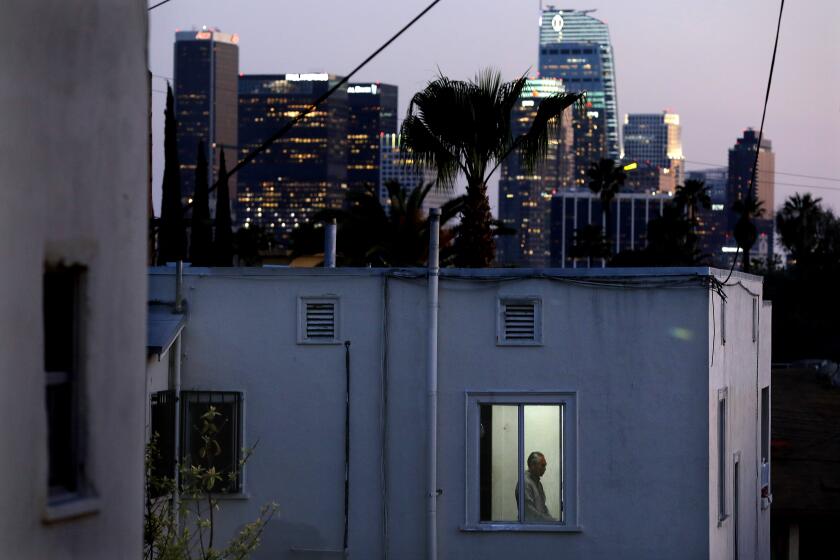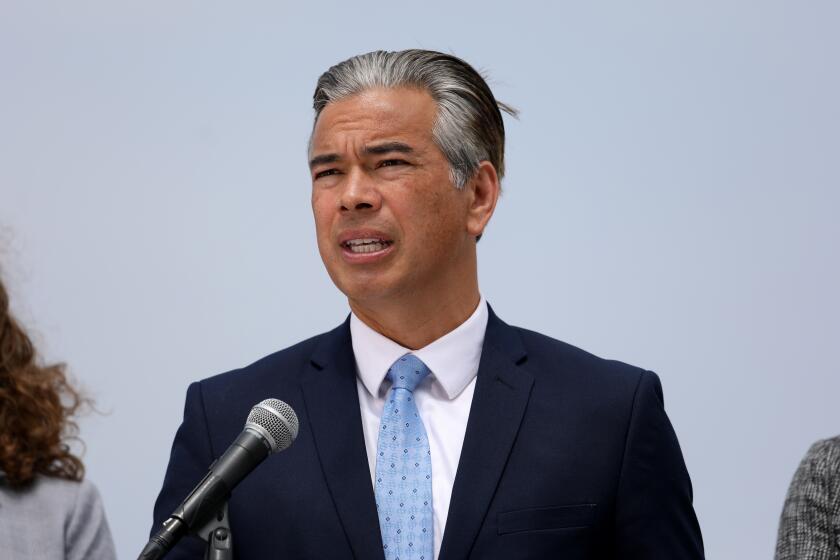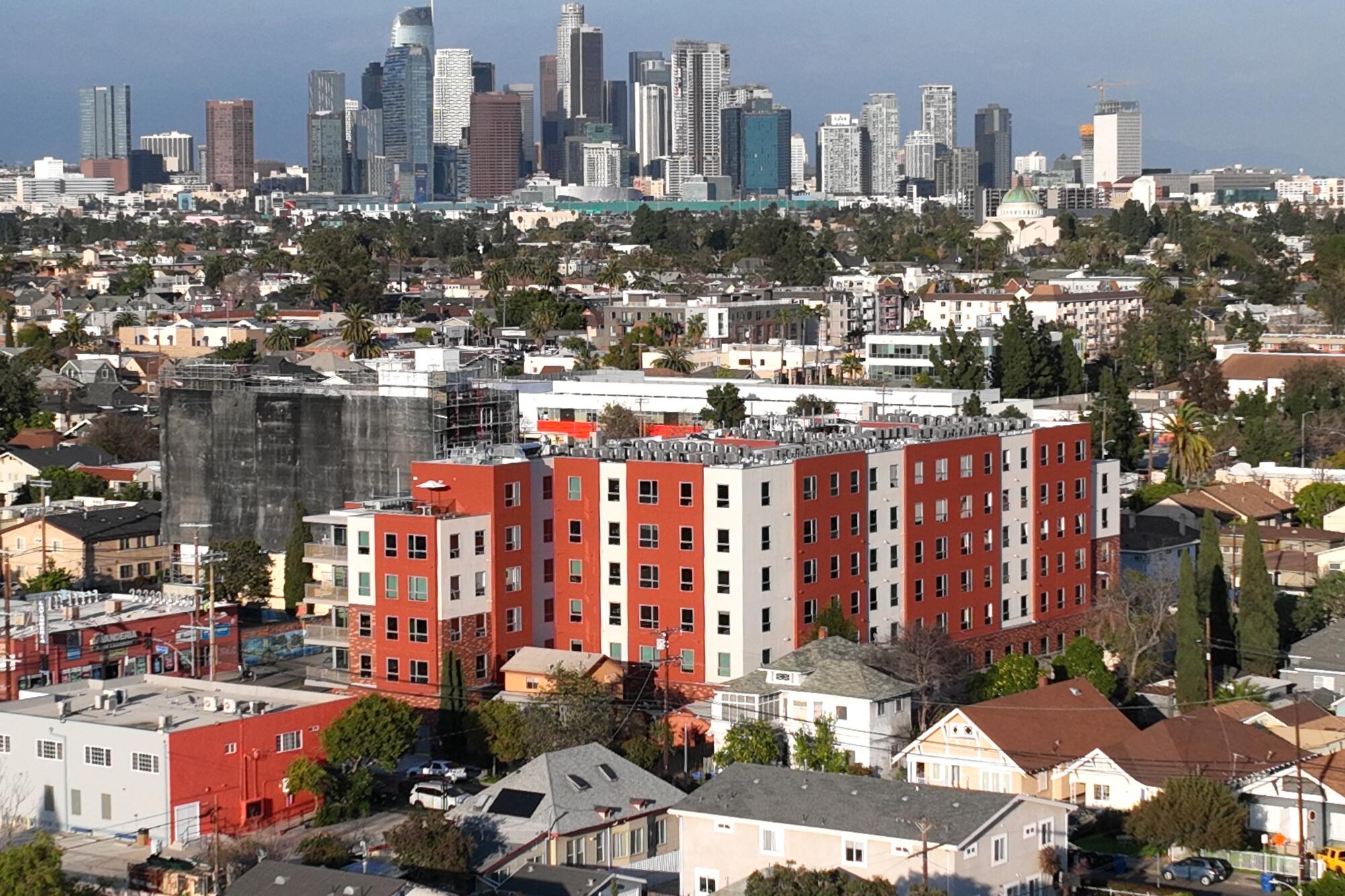
- Share via
Only a year ago the little gray and yellow house on 35th Place was nestled among similar early 20th century homes interspersed with a few postwar apartments.
Today it is flanked on one side by two four-story buildings and on the other by three buildings under construction.
Scenes like that are playing out on almost every block in the neighborhood west of the USC campus. A building boom is transforming a historic Black and Latino neighborhood into a village of modern student housing, unchecked by planning constraints that were enacted more than a decade ago specifically to hold off such a boom.
Similar development occurs over large portions of South Los Angeles where small firms have learned to max out the area’s underutilized multi-family zones that allow much more density than the single-family zones that are the bedrock of the city’s suburbs.

Subscribers get exclusive access to this story
We’re offering L.A. Times subscribers special access to our best journalism. Thank you for your support.
Explore more Subscriber Exclusive content.
But nowhere are the buildings as large, or the transformation occurring faster, than in the mile radius around USC. The drastic change is raising concerns that working-class families are being displaced — either lured by cash offers that aren’t enough to buy housing elsewhere or forced from affordable rentals — to be replaced by a well-to-do transitory population.
“I’m most concerned that new housing is being created for temporary residents at the expense of housing for permanent residents, multi-generational residents, people who are committed to the neighborhood,” said Councilman Marqueece Harris-Dawson, who is pushing for tighter planning restrictions he hopes will slow the pace.
But the neighborhood immediately west of USC, from Vermont Avenue to Western Avenue, may have crossed the tipping point where it is too late to slow the development.
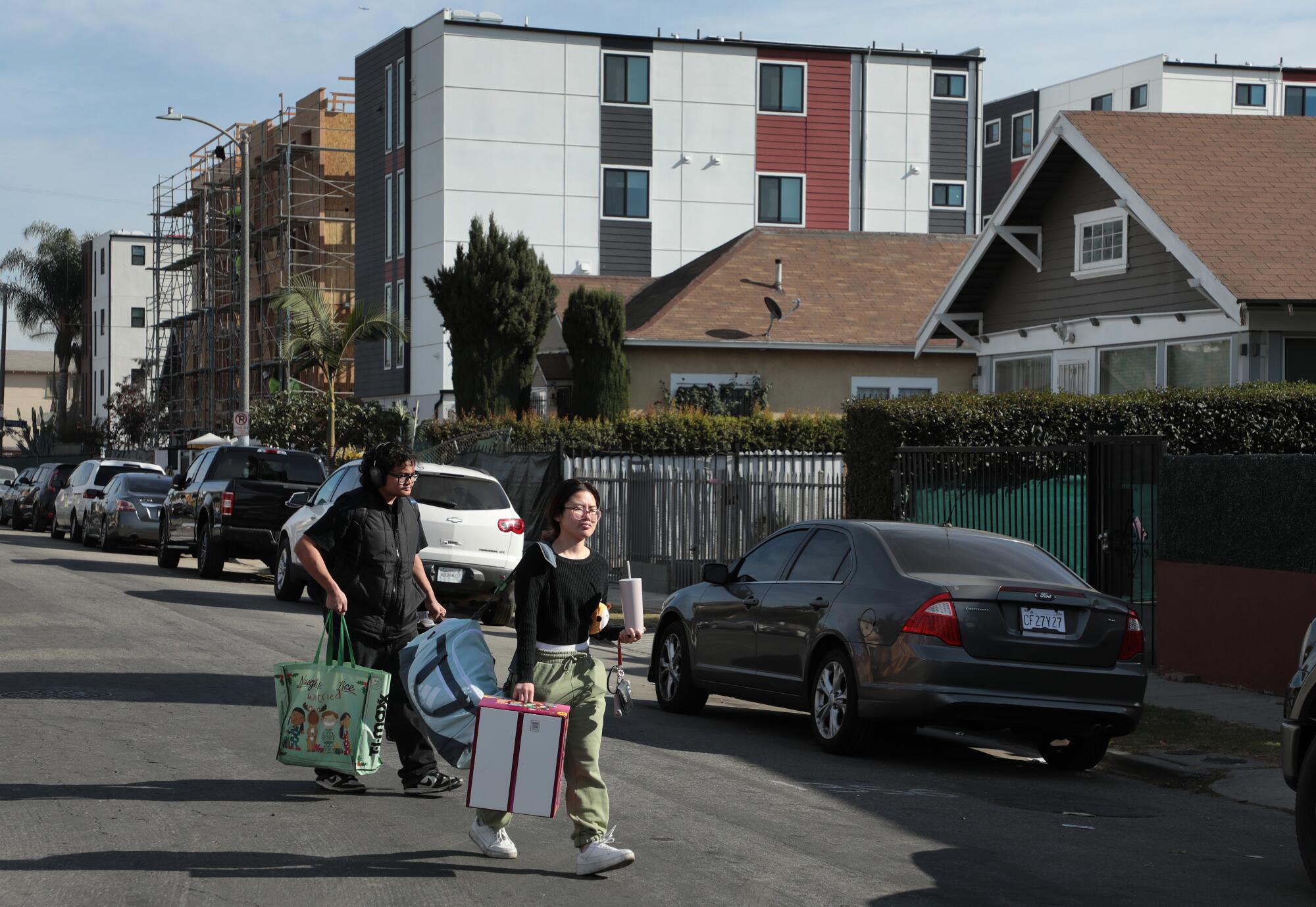
“I feel like the horse has left the barn in some ways,” said Cynthia Strathmann, executive director of Strategic Actions for a Just Economy, a nonprofit that researches and promotes housing policies to benefit low-income Angelenos.
“It’s not surprising,” Strathmann said. “SAJE has been talking to USC about development around USC for the last 20 years, sort of knowing that this was coming based on some of the signs we’ve been seeing for a long time.”
The transformation is moving so swiftly that almost any random block has construction in progress on one or two lots, a recently completed building or two and a boarded-up house with a demolition notice posted on a construction fence.
SAJE has surveyed one block of 36th Place three times, in 1999, 2009 and last year, working with students of USC sociology professor Leland Saito.
“Even between 1999 and 2009 you were already seeing this massive displacement of community members,” Strathmann said. Last year’s survey found only one person living on the block who was not a student.
Saito, who lives in a small white house at the corner of 37th Drive and South Catalina Avenue, said he feels caught up in forces beyond his control, as both a victim of the gentrification around him — with his street being overrun by tall buildings—and a gentrifier himself. He bought his house in 2008 on the salary of a university professor.
As the L.A. rental market soars out of reach for many working families, one community wants to hold on to its low-cost housing.
A combination of an aging homeowner population and the growing number of university students searching for housing has attracted a handful of determined developers whose agents walk door-to-door soliciting homeowners to sell.
A Neighborhood Stabilization Ordinance adopted in 2008 was designed to preserve the low-density character of the working-class neighborhood in the shadow of L.A. County’s largest private employer.
But loopholes in the planning law have allowed developers to build up to four stories, in most cases by-right, meaning they require no planning review.
“It seems to me they have a room full of people trying to find loopholes in the city’s building permit process,” Harris-Dawson said.
What they found was a way around the limit on habitable rooms. If one is a combination kitchen/living room, the rest can be bedrooms. For students, four small ones will do.
A stroll down one block of 35th Place is like viewing a time lapse of a long-stable neighborhood caught in sudden flux.
After 46 years in his house near Normandie Avenue, Glen Flowers has sold it for $1.1 million and is planning to relocate to his native Belize.
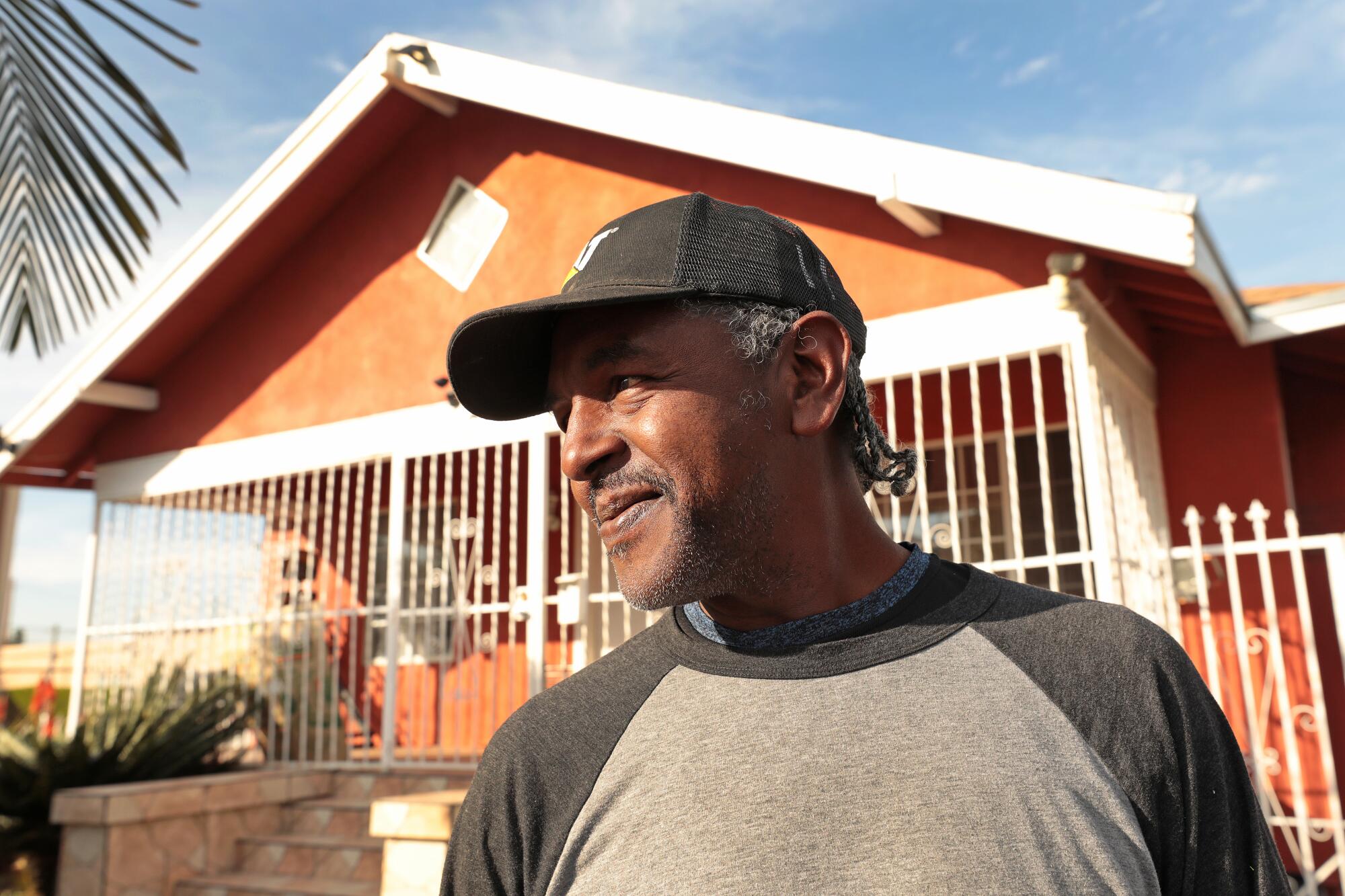
The house next door, which recently sold, is boarded up and growing waist-high weeds in its front yard. A four-story apartment building towers over Flowers’ back yard.
He stays in touch with some former neighbors who sold out earlier.
“They’ve moved out to the valleys and stuff like that,” he said. “I think there’s only one, two, three, four, five permanents on this block anymore.”
One neighbor sold his home early in the gentrification process for $800,000 and regrets it, he said.
“You know, I talked to him lately. He was sorry, because the money he got for his house, he wasn’t able to buy another house. And he spent that money and he’s in trouble.”
For those remaining, noise, dust and road blockages are common complaints.
Renters, too, find the change unsettling.
Vanisa Vacarro, a renter, said the neighborhood is a predominantly Belizean community. She lives in her apartment with her two young children. She said she’s concerned about increased rent prices but doesn’t feel pressure from her landlord to leave the building.
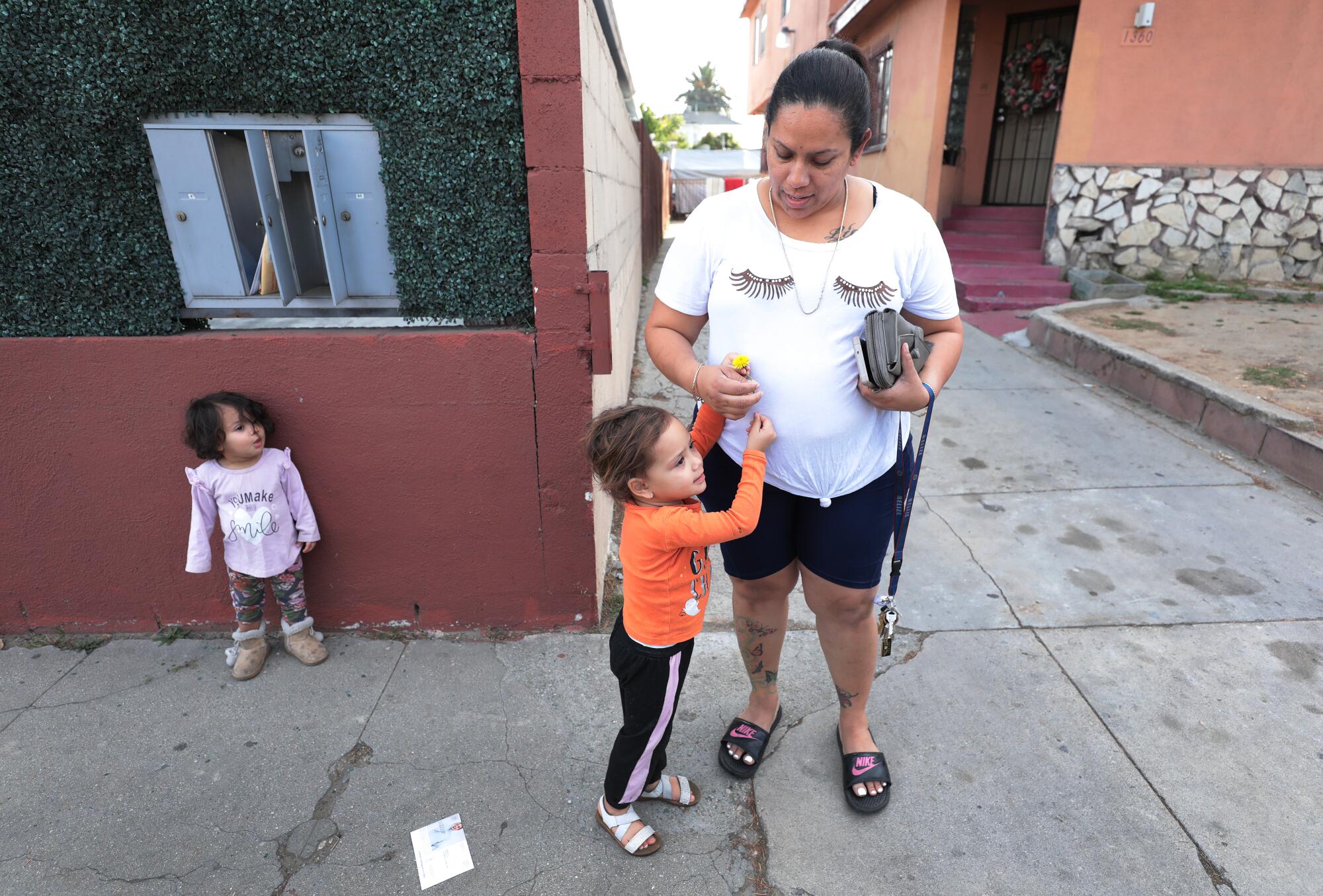
Vacarro lives in a 1970s two-story apartment. Though she has not seen any indication the owner would sell, she still feels anxious about what would happen if she had to leave.
She recently was able to move into a two-bedroom unit, and she knows she would have to move her two children into a one-bedroom again if she is evicted.
Several homeowners interviewed by The Times were ambivalent on the issue of gentrification, weighing the loss of community against the increase in value and an intangible —their sense of security.
They said that security provided by USC has eliminated gangs, drug sales and other crimes that once plagued the neighborhood.
“We love what USC has done in terms of the development of community, things that were a little different 20, 30, 40 years ago,” said Donald Harrison, who lives in the back house on a lot across the street from Flowers.
“I’m sure it’s mixed emotions for a lot of people,” Harrison said. “For sure, we would all like to say, ‘Oh, the parking is bad.’ Yeah, that’s no different than it was 20 years ago. It was even worse, you know, with the gang violence and the drugs and all the other stuff that came along with it.”
Harrison said he may consider leaving one day, but not while his mother is still in the front house.
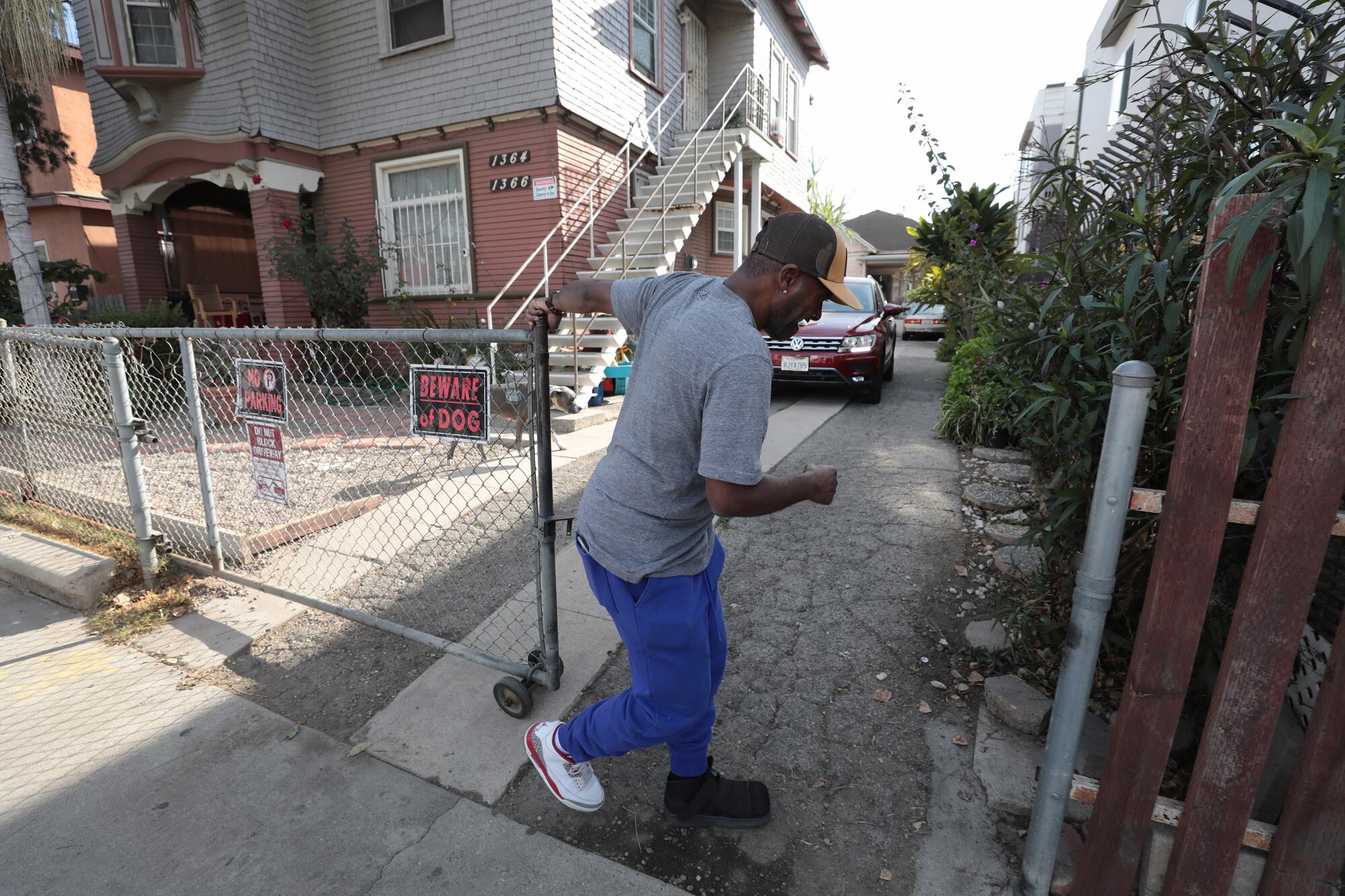
“She’s 88 now, and we’re trying to let her live her glory days where she wants to live it, you know.”
Stephen Berkeley, a pool table repairman who lives behind his mother-in-law’s house in the middle of the block, also accepts the change as progress.
“I’m for progress, but then sometimes progress overshadows the memories of the neighborhood, you understand what I’m saying?” Berkeley said. “And we’re losing and somebody’s winning.”
Berkeley said his 99-year-old mother-in-law was born in the front house and plans to leave it to her grandchildren. He thinks they’ll sell, but he’s OK with that.
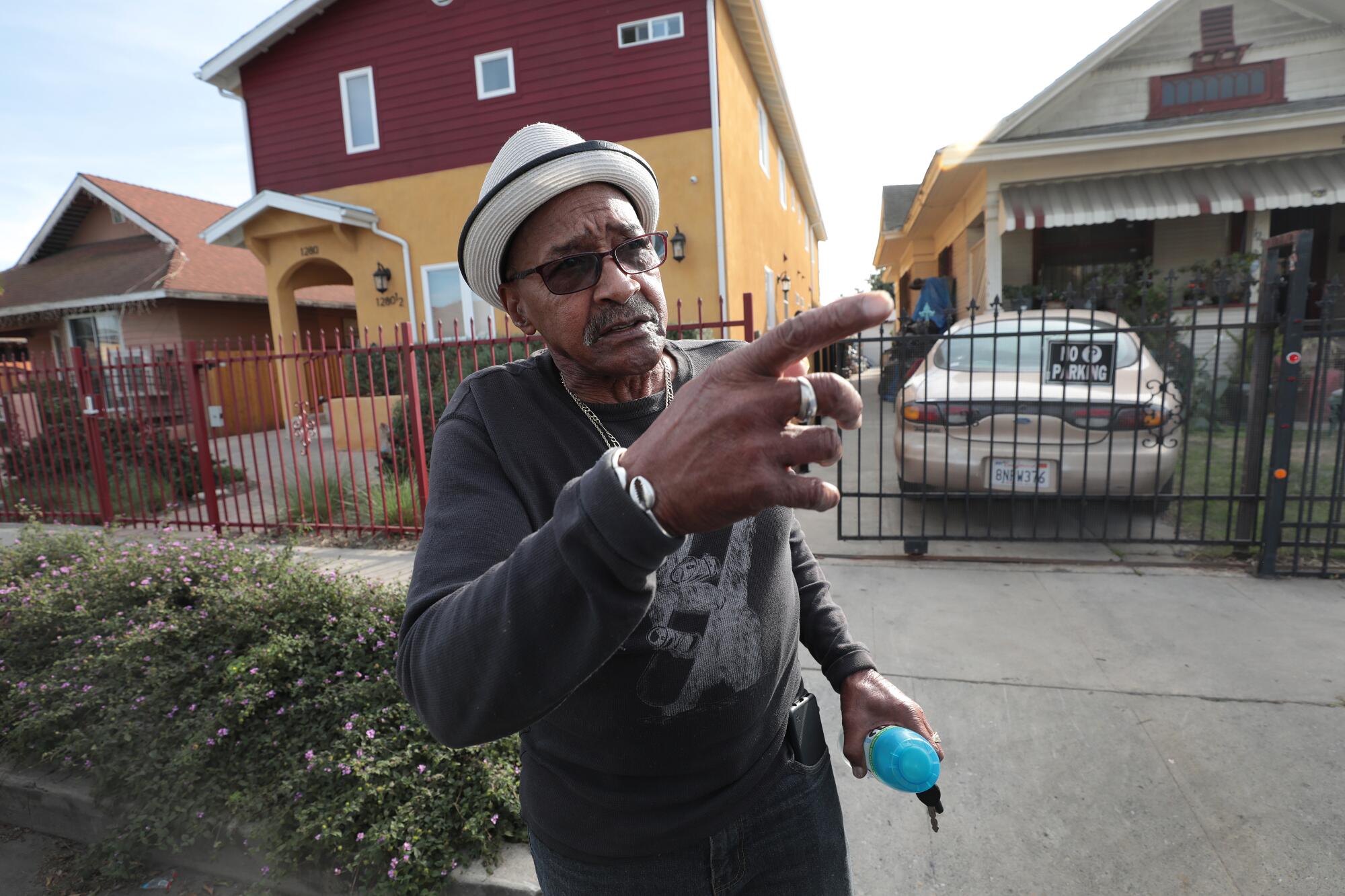
“I don’t want to stop anything,” he said.
Besides their disproportionate size, the new buildings rising in the neighborhood are set apart by their bright colors, splashy design features, sophisticated but small gardens and lots of bedrooms.
By stacking buildings two or three deep on a lot, each a duplex with up to three bedrooms, developers can place a dozen or more bedrooms where a modest wood-sided cottage once stood.
What distinguishes the new buildings most, in the eyes of critics, is that, despite the added density, they provide no replacement housing for the residents they displace.
Compared to the boxy, family-oriented duplexes rising in many parts of South Los Angeles, the developers here have created a housing model specifically aimed at students.
The small bedrooms, each with their own bathroom, are leased individually at rates ranging from the low $1,000s to more than $2,000 per bedroom.
They serve a market arising from the steady growth of USC’s enrollment, especially graduate students, coupled with the inability of the university to add more housing on its built-out campus.
The university provides housing for only a small fraction of its nearly 49,000 students. It guarantees housing for first- and second- year undergraduates in 7,200 beds in residence halls and leased off-campus apartments, including the 800-unit University Gateway Apartments on Figueroa Street. An additional 1,300 off-campus units are leased to graduate students and their families.
The private market has stepped into the gap. Over the years, many of the postwar apartment buildings scattered among the predominantly single-family homes west of the campus have entered the student market, advertising their availability with large banners bearing the cardinal and gold school colors.
In 2011, L.A. developer Geoffrey Palmer obtained city approval for Lorenzo, a 914-unit mixed-use development east of the 110 Freeway billed as an upscale student community.
1
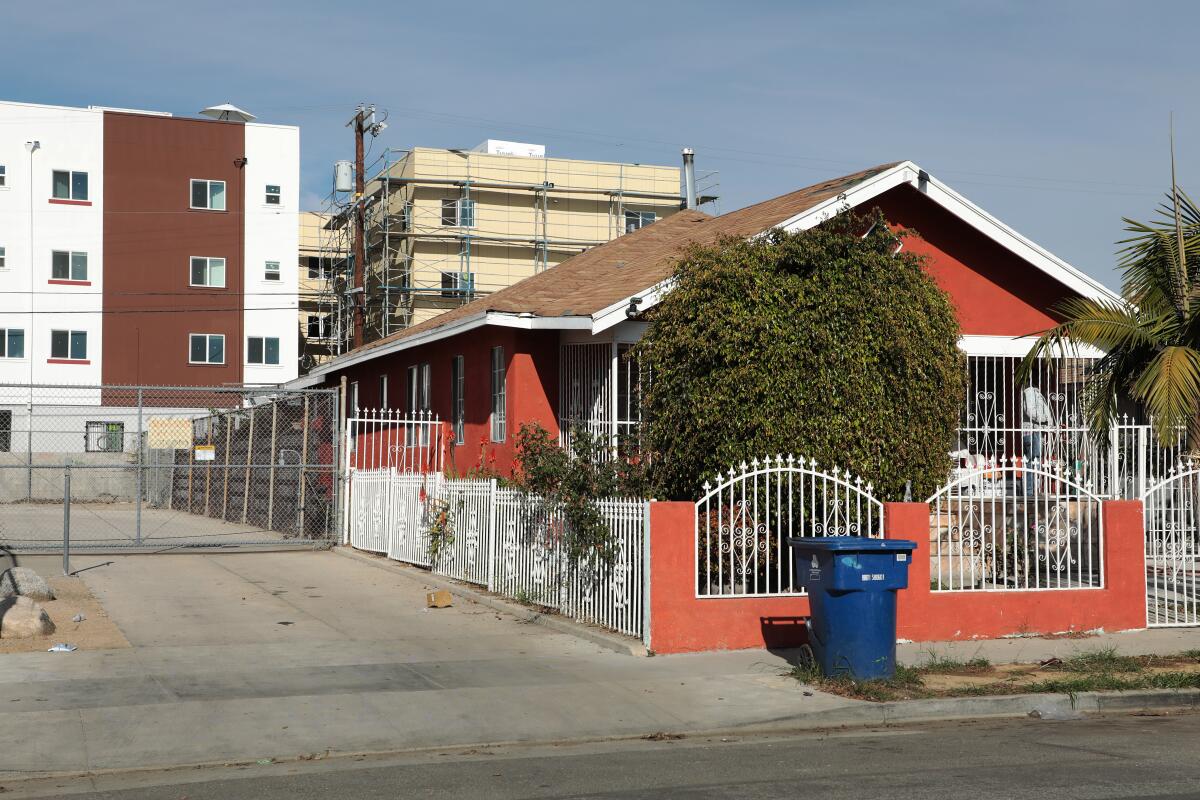
2
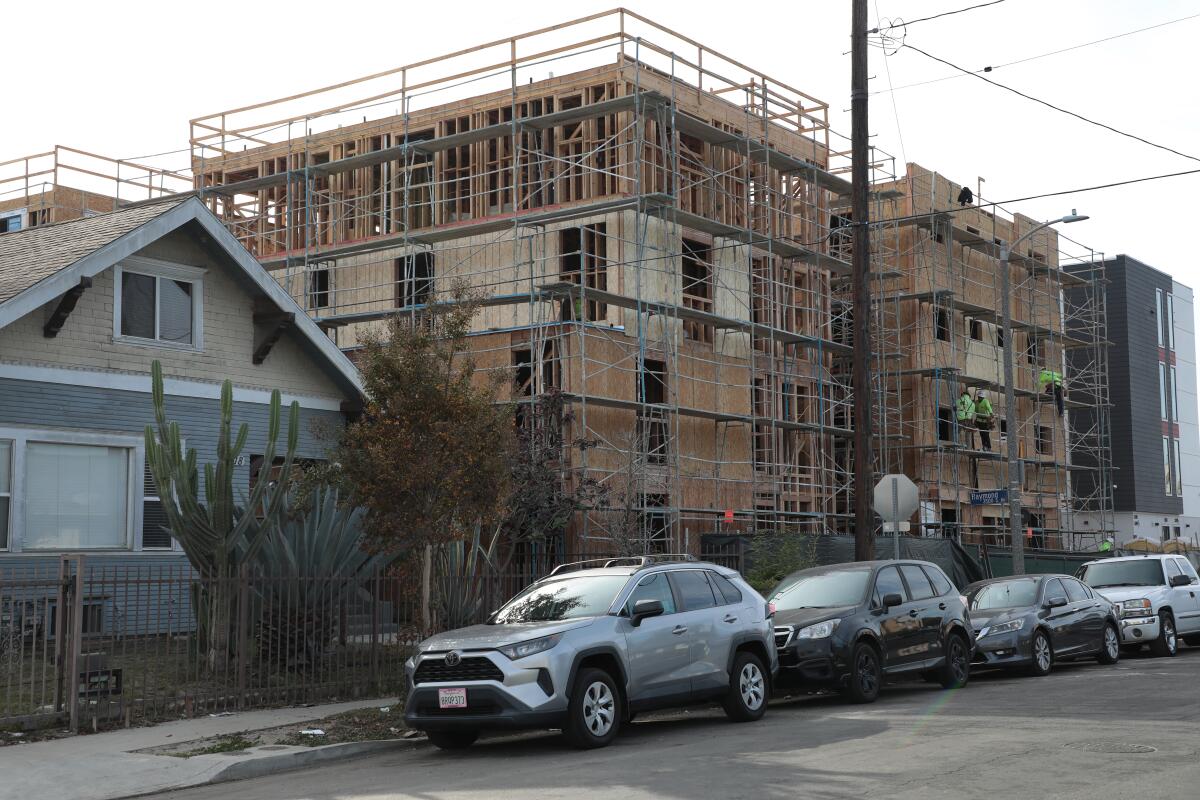
1. The home of Glen Flowers in the 1300 block of 35th Place which he recently sold to developers is dwarfed by multi-story student-oriented development that is transforming the bungalow neighborhood west of USC. 2. New multi story developments in the 1300 block of 35th Place is changing the neighborhood as developers are building multi-story student-oriented buildings transforming the bungalow neighborhood west of USC. (Al Seib/For The Times)
Since Lorenzo opened, demand has continued to rise as enrollment grew by nearly 11,000, about 70% of whom are graduate students.
The university has no affiliation with private developers but it has acknowledged its role in the off-campus housing by partnering with the website Off Campus Housing 101 where community rentals are listed.
Around 2018, developer interest that was focused on the area immediately west of campus accelerated into a buying spree spreading to Western Avenue.
A Times analysis of L.A. County Assessor records shows that 24 properties were purchased by limited liability corporations that year in the area bounded by Vermont and Western avenues and Jefferson and Exposition boulevards. Purchases by LLCs, a precursor to development, steadily increased in subsequent years, totaling 274 parcels through 2022.
Los Angeles city building records show that 135 permits to construct duplexes and 10 for apartments have been issued in 2018 or later, and 191 demolition permits have been issued, indicating that more is yet to come. Of the new construction permits, 72 are for three-story buildings and 36 for four-story buildings.
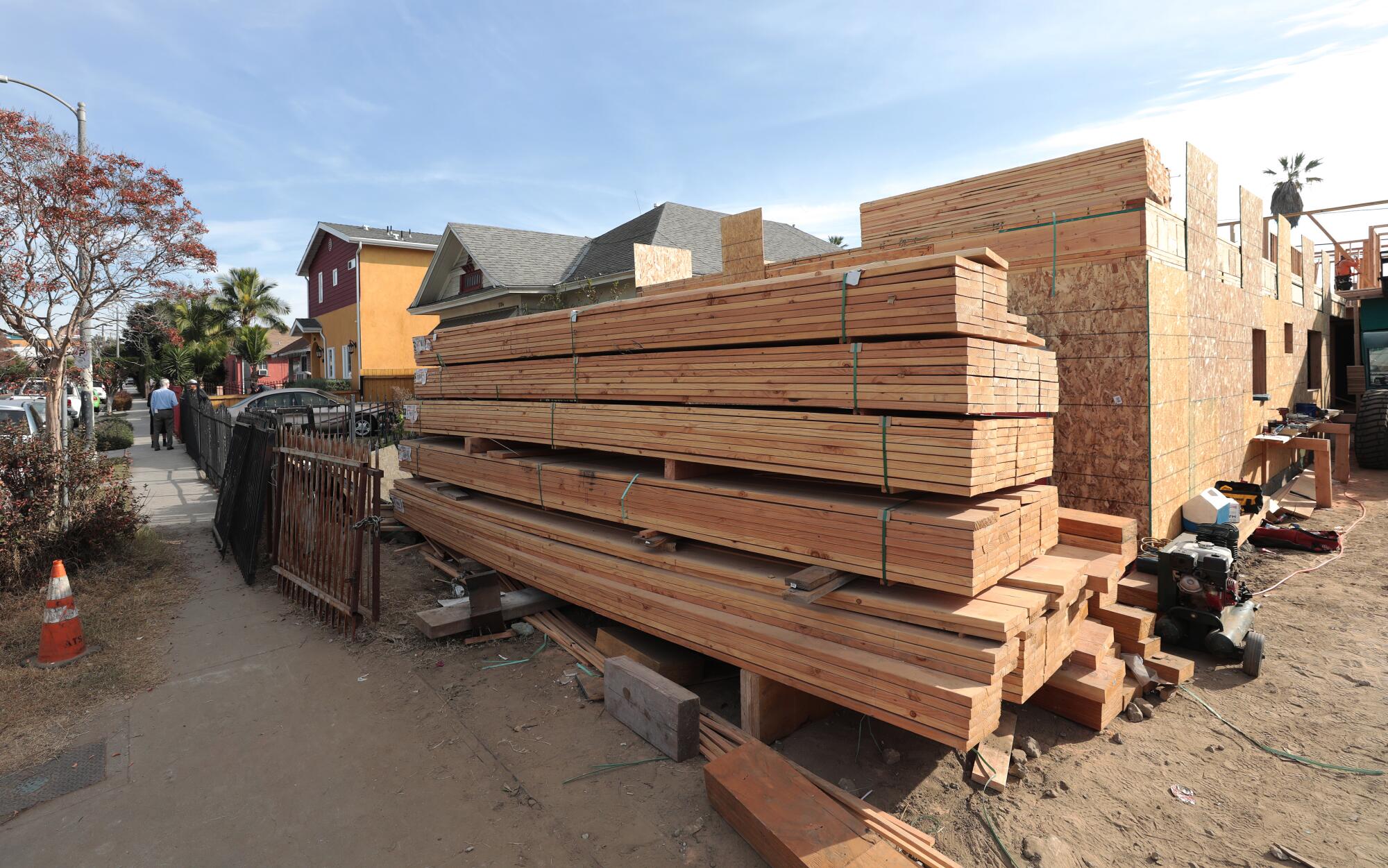
The effect is a dramatic reshaping of the neighborhood.
The Rev. Matt Keadle of St. Mark’s Lutheran Church has seen his congregation get smaller and smaller throughout the years as permanent residents have moved out of the neighborhood.
Keadle said one worshiper had lived in the area for decades before selling her home. She was a director of the church’s preschool and even cooked hot meals for those in need.
When she moved out, Keadle said, a big-box building of student apartments replaced her home.
“It was just so emblematic of the change that we’ve seen. Students contribute to the neighborhood in different ways,” he said, “but it’s different from [someone] who has been here for generations.”
Keadle said he, along with other community organizations, have tried to collaborate with private developers in the past. However, the talks have broken down.
“We just couldn’t come to an agreement that we felt like was going to benefit everyone,” Keadle said. “We’ve certainly tried and we will continue to do so.”
Oscar Rodriguez, who enjoys afternoons on the veranda of his Craftsman house surrounded by flowering bougainvillea and manicured vines, jokes that the forlorn gray and yellow house across the street reminds him of the movie “Up,” with a tiny home stuck between massive buildings.
The only longtime neighbor he was close to sold their home recently after 38 years. Maybe one day he’ll do the same, but he still says no to the constant offers.
“Well, I think that I’m kind of settled down here, and I have no need to try to get in another adventure,” he said.
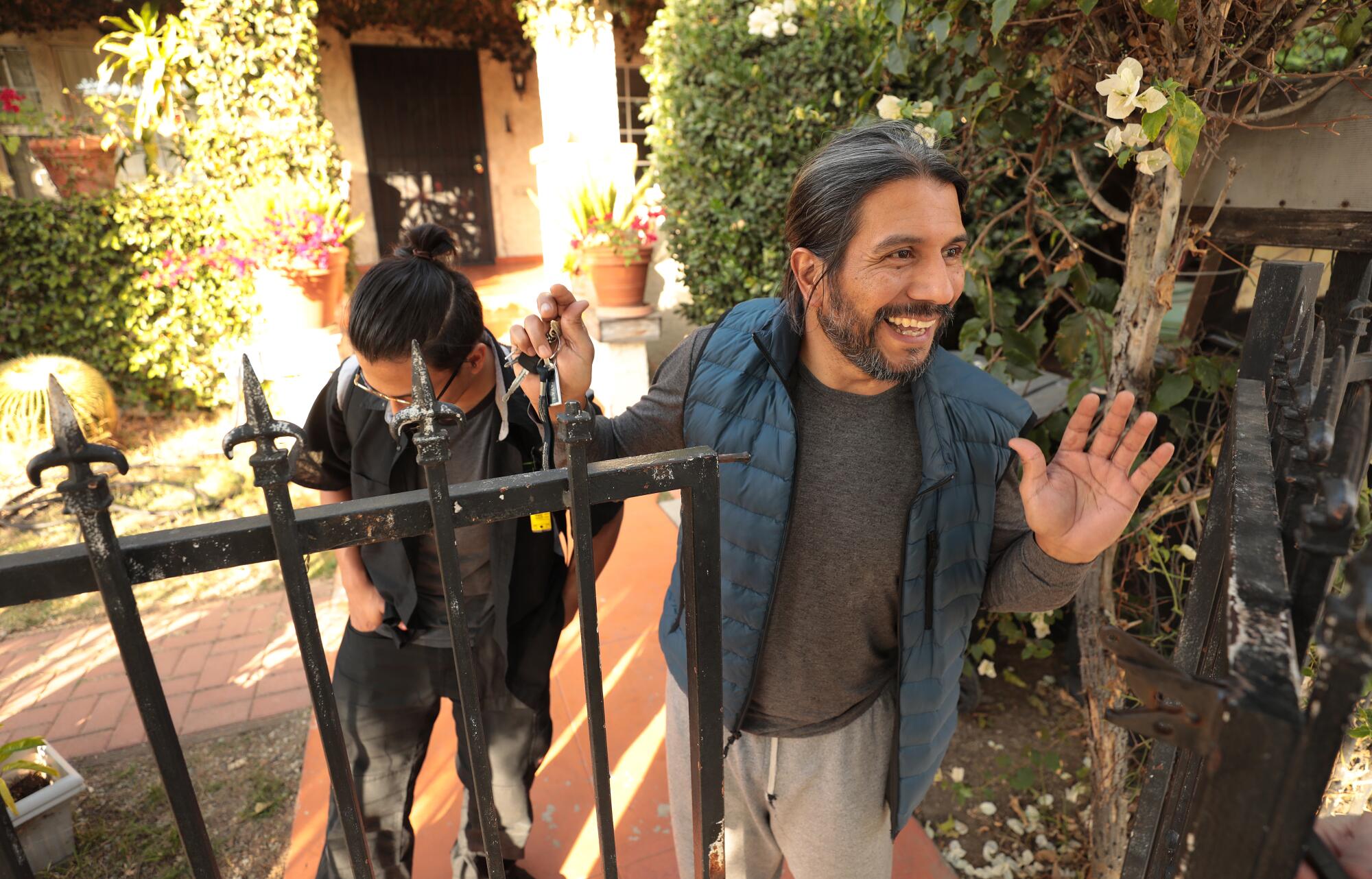
The construction on Rodriguez’s block is by-right, meaning it is consistent with the R1.5 zoning. Developers need only go to City Hall to file for a building permit.
The 2008 Neighborhood Preservation Overlay — additional zoning rules imposed on a specific area — imposed additional design standards that are nominally intended to protect the neighborhood’s character. In practice, they don’t.
Records obtained from the city Planning Department show that designs submitted for review are approved without comment.
In a 2020 motion asking the Planning Department for ideas to better protect the neighborhood, Harris-Dawson lamented that “community members and other civic stakeholders are seeking to understand why, despite the implementation of land use controls, there continues to be a loss of affordable housing and an overconcentration of student housing near the University Park/Expo Park community.”
The overlay requires a public hearing and approval by a zoning administrator for any dwelling with five or more habitable rooms per unit. With three or four bedrooms and a common living area, the student model doesn’t reach that standard.
The Harris-Dawson motion would tighten the standard to four habitable rooms. It is currently under review by the city attorney.
The developers who are turning the neighborhood upside down generally keep a low profile. They usually form separate LLCs for each property, masking their identities. A Times analysis of company mailing addresses identified dozens of small operators and 10 firms that owned five or more properties in the neighborhood.
The largest, Tripalink, has projects either completed or in progress on 23 parcels in the 43-block area and owns another 20 parcels. The company runs a shuttle bus service through the neighborhood to take students to campus.
Formed in 2016 by USC graduate Donghao Li, Tripalink now boasts 10,000 units under management including luxury apartments in downtown L.A., Koreatown, Philadelphia, Chicago and Seattle. The company’s website says it specializes in co-living apartments.
Harris-Dawson said his office receives complaints about noisy construction that starts early in the morning and blocks streets and sidewalks.
There are also complaints that developers, including Tripalink, have bought and demolished houses without obtaining city permits, thus avoiding review of rules that seek to preserve neighborhood character.
Li did not respond to multiple requests to speak with The Times.
Recently, an unexpected twist emerged when the Los Angeles Homeless Services Authority leased a newly completed triplex west of Exposition Park to house 20 people being removed from street encampments through Mayor Karen Bass’ Inside Safe program.
It turns out that the student model of individual bedrooms with private bathrooms sharing common living areas is also a good match for formerly homeless people, said Kris Freed, whose consulting firm is working to sign up master leases for LAHSA.
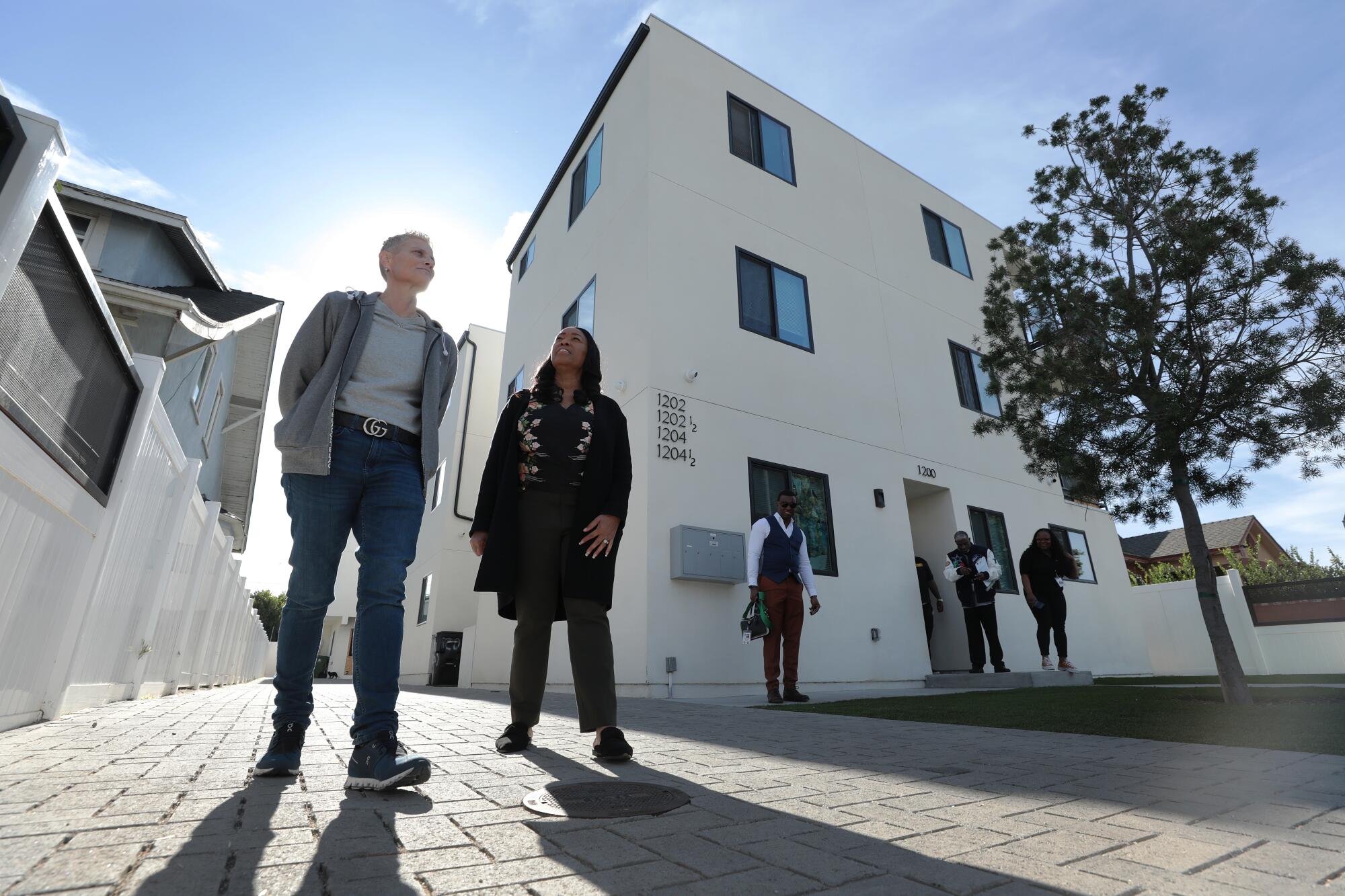
Freed, who thinks the building boom may have oversaturated the student market, is negotiating with 12 developers of new buildings.
A potential windfall of badly needed housing for homeless people is viewed favorably by residents, neighborhood advocates and political leaders alike.
“That would be great if they started using it for homeless persons,” said Flowers, the homeowner who just sold out. “The population is growing by the day,”
But that wouldn’t solve the fundamental problem: displacement of longtime residents.
Frustrated by the ineffectiveness of past strategies, Harris-Dawson has introduced a new proposal that would require developers to notify tenants of their legal rights, deny future demolition permits to those found to have infringed tenant rights and give tenants a right to sue over violations of the zoning code.
A hearing before the council Planning and Land Use Management Committee has been postponed several times.
Regardless of the motion’s fate, Strathmann of SAJE thinks a broader approach is needed. Among other things, she said, displaced tenants should have an immediate right of return to housing somewhere else in the neighborhood, and builders should be required to create larger bedrooms.
“How about you replace it with the same size rooms, so families can live there,” she said.
More to Read
Sign up for This Evening's Big Stories
Catch up on the day with the 7 biggest L.A. Times stories in your inbox every weekday evening.
You may occasionally receive promotional content from the Los Angeles Times.
